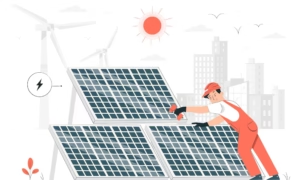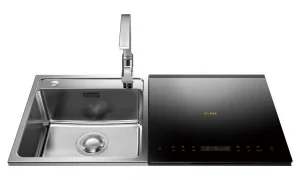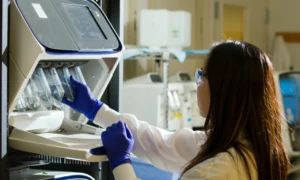The world of printing has changed drastically over time. There was a time when the printing press was new to everyone and the only source to print something. However, today everyone owns a printer that provides with ample options to play with.
On the other hand, there has been the evolution of technology in 3D printing, where one can create literal and functional objects out of a printer. So, with the advancements, there are different working processes for 3D printers.
However, let us explore the SLA 3D printer and it’s working. The process of SLA (Stereolithography) is one of the common resin 3D printing processes that is popular for highly accurate results.

What is Stereolithography (SLA) 3D printing?
SLA or Stereolithography, also known as vat photopolymerization, is a 3D resin printing process from the families of additive manufacturing. The stereolithography 3D printer works on the principle of a light source like a laser, which converts the liquid resin into hardened plastic.
The other three processes use techniques, but the difference lies in the light and positioning of the source and resin tank, affecting the 3D printer price. So, the other three processes are:
• SLA (Stereolithography): The process uses UV light to cure the liquid polymer resin.
• Digital Light Processing (DLP): The DLP process involves the digital projector as a light source that will cure the layer of the resin.
• Liquid Crystal Display (LCD): The light source is a liquid display module that projects specific light patterns to cure the polymer resins.
However, among these three processes, SLA is the most widely used due to its accuracy, which converts the polymer layer by layer with the use of UV light.
A Brief History of Stereolithography
In the early 1970s, Dr. Hideo Kodama, a Japanese researcher, invented a new approach to layered printing with the use of photosensitive light to cure polymer resin. However, its name was given by Charles W. Hill, who patented the technology of the SLA 3D printer in 1986.
Later, by the end of the 2000s, with the expiring patents, various other technologies like small format and desktop 3D printing came into the market. However, FDM (Fused Deposition Modelling) was the first to gain popularity, especially in desktop systems.
With time, FDM became famous in the industrial market, but SLA is the oldest method in the market and is known for producing the smoothest surface objects with detailed parts and finishing.
The Major Components of SLA 3D Printer
The typical SLA 3D printer is composed of four sections that support the printing of the object:
Vat: The vat is the source of the liquid polymer, which is a clear and liquid plastic known as resin.
Build platform: The build platform of a printer is movable up and down according to the printing process and is lowered into the vat in the SLA printers.

Ultraviolet laser: The ultraviolet laser rehabilitates the layers into the hardened plastic.
Computer Interface: An interface is essential to manage the operations of the printer, which manages the laser and builds platform positioning according to the object to be printed.
The 3D printers work with a CAD model through a computer and produce the object in an upside-down positioning with the laser pointing to the build platform.
In Conclusion
The printing industry has transformed a lot over time. There was a time when printers were limited to specific industries and were seen in certain offices or factories. But now even printers are available in households.
When it comes to 3D printers, they are making their way into various prominent industries, including education, manufacturing, healthcare, etc. Though the 3D printer price is on the expensive side, it is perfect for industries and businesses as it is a meaningful investment.
The usage of SLA 3d printers is increasing, and if you want to get 3D printers, you can take a look at Evo 3D, where you can find a diverse variety.








































